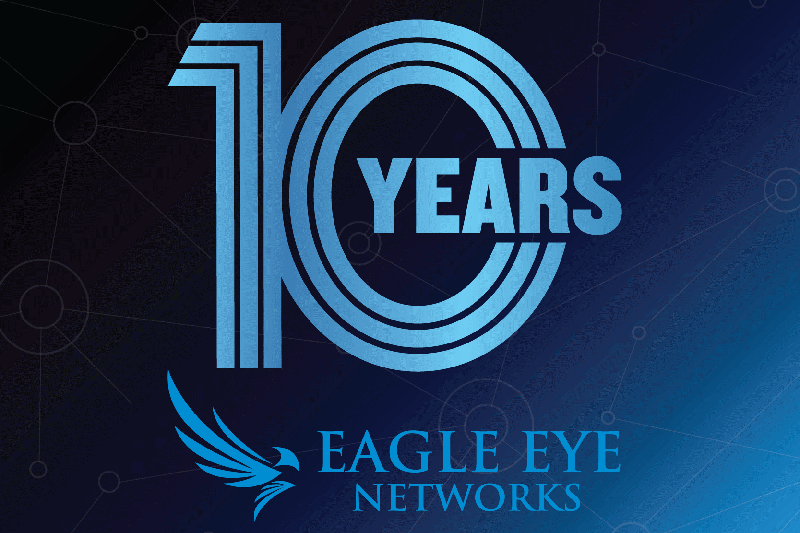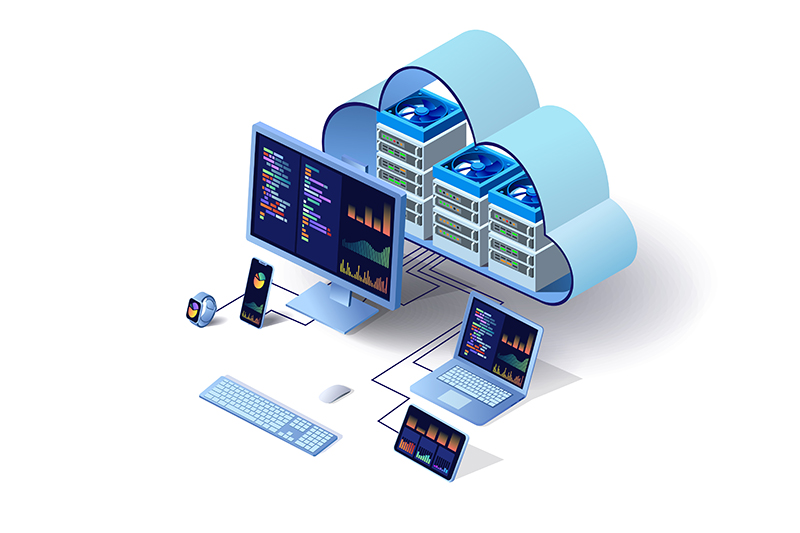A flexible solution for site managers, security operators, or operations staff, Video Surveillance as a Service (VSaaS) is a cloud-based video surveillance solution where video footage is stored in the cloud and delivered over the internet via a host provider as a ‘service’. Its use has grown significantly in the security industry alongside the general development of cloud-based solutions, and provides users with the ability to watch, monitor and record video footage remotely. Here, we provide a useful overview of what the term really means, the benefits that proponents regularly highlight, and some of the challenges ahead for the technology.
As a Software-as-a-Solution based offering, users will generally pay a recurring fee (monthly, or quarterly, for instance) to the provider, who will look after the management and storage of video surveillance footage.
It should be noted that there are varying opinions on what is a ‘true’ VSaaS solution. In the IT and consumer world, ‘true’ SaaS models specifically mean zero upfront costs. This is a less common model in security, where customers are often still charged for initial camera and installation costs. In addition, ‘true’ VSaaS models are said to relate to where the vendor provides the full package of its own cameras, storage and VMS. While there are a few providers who offer this, such as Verkada and Cisco Meraki, this isn’t necessarily the case for the majority of vendors in the sector.
There are two types of VsaaS – hosted and managed.
- Hosted video: video generated onsite is transferred on the customer’s WAN (wide area network) to the provider’s data centres, where it is managed and stored.
- Managed video: video is stored at the customer’s site and is remotely managed by the provider.
- Combination of hosted and managed: Video is streamed to the provider’s site but also stored on the customer’s premises in one of many ways, such as on the cameras, on an appliance or on a network-attached storage (NAS) device.
A huge advantage that proponents highlight is the lack of hardware required, as there’s no need for a specialised video management system (VMS), CCTV footage is not stored onsite, and users do not have to save files on an NVR (Network Video Recorder) or computer hard drive (though it is possible to have a hybrid solution that simultaneously supports IP cameras and directly connected analogue cameras). The IP cameras used to record and send data to the cloud are designed to be the only physical hardware involved.
The “as a service” part of VsaaS refers to the payment to the cloud vendor that stores and manages the video for users. Once the IP cameras are set up, alongside the internet connection and the service package from your provider, all the technological updates get rolled out in the background.
There are several packages that might be available from a provider. Examples include: remote viewing on unlimited devices (using an app); realtime alerts sent to smartphones; response based on AI (e.g. determining false alarm), and so on.
What are the benefits of VsaaS?
Proponents of cloud-based and VSaaS models highlight several advantages to utilising such a solution. Here, we outline a few of those that are most regularly noted.
Value for money
Less hardware, as mentioned, means less capital expenditure and installation costs (other than for your IP cameras, of course). On top of that, maintenance costs, including site visits are minimised. Meanwhile, there are savings for on-site security personnel, which can be employed only where necessary and on IT personnel (usually more than hardware and software).
Remote access
VSaaS allows operatives to make quick decisions from remote locations, for example, a security professional on a business trip could still monitor an asset from wherever they are, 24/7. The remote facility has been particularly useful during the COVID-19 pandemic, of course.
Cyber security

Many cloud VMS vendors have dedicated cyber security teams to monitor new vulnerabilities and apply instant security patches via the cloud to the on-premise appliance.
“VSaaS systems will have a continuous deployment of features and will always be secure and up-to-date,” said Dean Drako, Founder and CEO of Eagle Eye Networks. “A good VSaaS solution is cyber-secure with end-to-end encryption, TLS, and HTTPS. A quality VSaaS solution maintains multiple encrypted copies of the data in the cloud, creating a high availability and redundant solution.”
The cloud is not invulnerable to attack, of course – however, some industry figures think that reluctance to switch from analogue security methods is down to popular misconceptions.
Talking to IFSEC Global, Simon Cook, Associate Director of QCIC said: “In reality, most of the cloud exists in data centres owned by tech giants like Amazon, Microsoft and Google, or in purpose-built, security-focused, data centres that utilise the very latest security protocols, employ teams of staff to implement frequent upgrades and assign astronomical budgets for protecting data. These companies are able to provide greater security than most individual organisations.”
Cook adds: “The cloud isn’t completely invulnerable. With more components potentially accessible via the internet, there is always risk. However, the risk can be far greater with an on-premise solution that is not patched correctly or with devices running out of date firmware.”
Flexibility and convenience
A VsaaS system is virtually ‘plug and play’ by comparison to DVR/NVR/VMS, argues proponents which requires installing the operating system software, configuring routers, setting up storage servers, configuring cameras, and installing application software.
Upgrades and storage are handled remotely by the SOC, meanwhile adding new cameras to your VsaaS system is straightforward – it’s a very scalable solution. Not only that, there’s no need to delete potentially important archive footage (e.g. something that could be evidence) to make room for new footage.
Shareability
Something else that speeds up response times to incidents is the sharing feature where you can distribute clips to other parties, such as to police or security staff members elsewhere.
What are the challenges of VsaaS?
For a VSaaS system to work, a reliable internet connection is critical to ensure video data to the cloud.
“Internet connectivity is always required unless cameras are configured with edge recording. To those ends, bidirectional firewall ports must be opened to allow for recording and viewing of data, Internet access is not always reliable, and the cost of edge recording solutions increases the CAPEX associated with initial installation and the OPEX of its maintenance,” said Chris Grniet, Regional VP for Security and Technology Consulting at Guidepost Solutions.
“VSaaS requires huge bandwidth to the cloud storage/software, and the monthly cost can run into huge figures if there are a lot of cameras,” added Daniel Lim, Project Manager at Prowler International.
Further, with the bandwidth constraint, the quality of video may have to be sacrificed. “Recording may be lost when Internet connection is disrupted,” said Michael A. Silva, Principal of Silva Consultants. “Bandwidth restrictions may require compromises in image quality and recording rates.”
Finally, compared to the NVR architecture which has been in use for some time, cloud is relatively new and as such, the quality of service may vary from vendor to vendor.
“VSaaS has no standard offering across the market and it is still evolving with service providers are trying to bring new and innovative features in their offerings to attract the users. In such scenarios, it is highly possible that certain features provided by one VSaaS service provider may not be available with others, which may cause an inconvenience to users,” said Dhananjay Birwadkar, Director for Homeland Security and Smart City at MitKat Advisory Services.
The state of the market
The VSaaS market was valued at $18.51 billion in 2018, and is projected to reach $52.98 billion by 2026. There’s little doubt that the journey from analogue to cloud-based systems is gathering momentum, and that the pandemic gave it a significant shove.
Though there is some concern around the professional expertise in handling IP cameras, investment in the sector is growing. Two examples include a $40m injection into Eagle Eye Networks from venture capitalist form Accel (who have been involved with Facebook, Slack, Dropbox and Spotify), as well as the company’s purchase of AI provider Uncanny Vision, which will enable ‘true’ AI on its platform. Dean Drako, the company’s founder and CEO, believes that “we have passed the tipping point in the video surveillance industry’s adoption of cloud video, as businesses of all types and sizes have realised the advantages of a true cloud solution.”
Meanwhile, Cloudview, another provider of cloud video surveillance, also achieved more funding this year, with a £3million investment boost to release its “next-generation of cloud video recording technology”. Understanding some of the industry concerns, its launch emphasises that data is “stored safely and is always accessible… with military-grade data security and privacy by design at its core.”
IFSEC Global’s own research revealed that 44% of security professionals were using or installing cloud solutions, while a third would now prefer their storage model for AI to be operated on the cloud.









This is a great overview of VSaaS. Many businesses who ordinarily would not have the resources, are now able to utilise the many benefits of proactive surveillance.